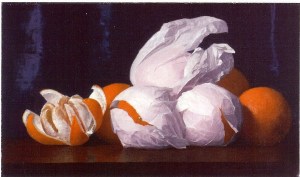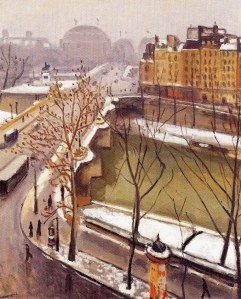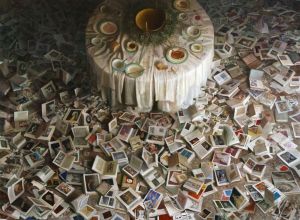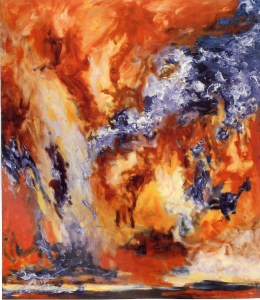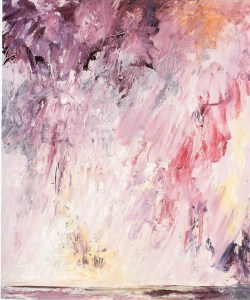Mariana
Monica Dickens
First, the literary review: Spirited English girl comes of age. Enjoyable, somewhat cozy, romantic tale.
Amity
Bernard Fleetwood-Walker
Now for the painting(s): I’ll be truthful. I ordered this Persephone because of the cover. I love the standard gray Persephone covers, but they have done such a great job choosing paintings for their Classics editions that they are hard to resist. And two of them, Mariana and Cheerful Weather for the Wedding had images too compelling to pass up. (Thankfully I enjoyed Mariana much more than Cheerful Weather.) The cover painting on Mariana is called Amity and was painted by Bernard Fleetwood-Walker in 1933. I am drawn to it not only for the bright colors and the idyllic scene depicted, but I am also fascinated because there is something slightly subversive in the painting. Stylistically, the painting is almost illustration-like in the vein of American Norman Rockwell, but it also has a bit of an ironic twist like toned down John Currin.
Whatever Fleetwood-Walker’s intent, the two figures look as if they are related and there seems to be something going on below the surface that hints at an “innocent” incest in the same way the relationship between the cousins in Mariana does. And although the painting seems to be the epitome of wholesome sweetness at first glance there is something highly sexual about it as well. There seems to be a hint of Balthus-like perversion and more than a little of Cadmus’ cartoonish sexuality thrown in. The female figure recumbent, lazily offering up her flower with a basket of (perhaps forbidden) fruit. The male figure slightly erect with his muscular but fleshy head thrust forward. They look bored by whatever it is they are watching (other members of the party perhaps) but they also look as if things may have been interrupted just before they got going and are now just biding their time until they are alone again. .
Do you think the folks at Persephone had these things in mind when they chose this painting? Caustic Cover Critic points out that Penguin also used the painting for Colette’s The Ripening Seed. If Penguin chose the same painting for Colette’s tale of sexual awakening, I guess my take on the painting isn’t as far fetched as I may have initially thought.
Fleetwood-Walker’s Amity:
Like a combo of Norman Rockwell…
and toned down John Currin…
with hints of perverted Balthus…
and sexual Paul Cadmus






